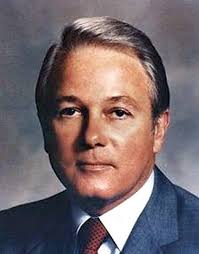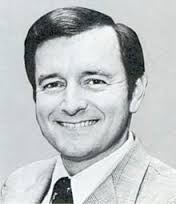

In 1973, the Louisiana Legislature initiated what would be the 11th revision of the State Constitution. Under the leadership of 1st term governor, Edwin Edwards, they set forth with the goal of cleaning up and reducing the size of the State Constitution that had been amended hundreds of times since the last revision in 1954. The result was a document roughly 1/4 the size of the previous document.
During the deliberations, the delegates had heated discussions about the content of the articles of the constitution, and it comes as no surprise that Article 8: Education was the most controversial. The delegates could not agree on the structure of higher education and K-12 education; nor could they agree on how the positions should be filled. They ultimately decided to leave it up to the citizens of Louisiana. Article 8 was the only article to be offered on the ballot with a Plan A and a Plan B.
- Plan A separated higher education from K-12 & technical training; created the Board of Regents, Board of Supervisors LSU; Board of Trustees for State Universities and Colleges; and the Board of Supervisors for Southern University. It also established the Board of Secondary and Elementary Education (BESE) and retained the position of Superintendent of Education. Both the BESE and the superintendent would be elected by popular vote. A provision was included to make the superintendent an appointed position, later, if passed by 2/3 vote of the legislature.
- Plan B differed slightly in the number of education boards and maintained the superintendent as an elected position.
Of course, Plan A was ultimately passed by the people, but during the debates prior to offering the decision to the public, the superintendent was amended from elected to appointed four times. The reason being that many legislators, and the governor, felt that having two elected heads over K-12 education would perpetuate the department’s inability to move forward; as it had in the past. With neither the BESE, nor the superintendent answering to each other, bickering and political grandstanding constantly got in the way of progress. The trend, in other states, had been to make the superintendent appointive, answering to the board. In the end, they agreed to leave it as an option, if it became a problem; and, it did.
It is also important to recognize that BESE was setup with 8 districts (matching the congressional districts) and three gubernatorial appointees. The delegates were mindful of the importance of preserving basic democratic representation in regards to education. Political trends change. New governors are elected. The idea was for the voting public to determine the direction, and this would be demonstrated by the members they elected, and those appointed by the governor they elected. The intent was to prevent takeover by powerful political factions that represent small groups of people.
A few years after BESE was established, Louisiana lost one of its congressional districts due to reduced population in the census. The BESE districts were redrawn to maintain 11 total members, because losing a board member would disturb the balance.

At the time the new constitution was ratified, Louis Michot served as the elected superintendent of education. He was succeeded by J. Kelly Nix who served two full terms. The next, and last elected superintendent, was Tom Clausen. In his first two terms, Edwards and his successor, Dave Treen, grew frustrated with the inability of the elected superintendent and the elected BESE to agree on education policies. Several attempts were made to change the superintendent to an appointed position, but failed.
Gov. Edwin Edwards succeeded Dave Treen in what would be his 3rd of four terms as governor. Immediately after taking office, he announced his intent to complete the task. He would do whatever it took. Fearing the elimination of his elected office and knowing that the BESE he was at odds with would never appoint him, Tom Clausen began a very public campaign to oppose the effort to make the position appointed. He quickly began to lose credibility with legislators.
Planning his bid for a 4th term, Edwards was determined to be the first governor to appoint a superintendent. He knew the obstacles. The bill was introduced in both the Senate and the House. Both bills cleared their respective committees, but the decision was made to go with the Senate bill; giving the House the final say in the decision. Edwards knew his biggest challenge was in the Senate. In preparation for the bill’s appearance on the Senate floor, Edwards and his team tallied the votes to gauge their probability of advancing the bill. They determined that 10 legislators had made commitments to vote both ways. In addition, 4 legislators refused to vote with him if he wasn’t on the floor when the vote took place. Knowing he had to gain every vote he could, Edwards pulled no punches.
The following morning, the senators began to assemble in the chamber to convene on the order of business. Little did they know they were about to witness a show of determination by Edwards that cannot be matched. None of them were aware that Edwards had dispatched a State Police helicopter to retrieve Senator Nat Keifer from his home in New Orleans. Keifer had not been present in the legislature for nearly a year due to a liver disease that had progressed beyond recovery and left him in his final days of life. The chamber rose in tears when he stepped from behind the curtain. Many of them thought that they would never see him, again. When the question was called, the bill failed to pass the Senate by one vote, but the Senate body got the point. Edwards would stop at nothing to pass the bill. The following day, the bill was returned to the floor for regular business; and passed. All that remained was the House.
“Some good reasons can be advanced for keeping the post elective, but there are better reasons for changing the system. What we do with education can reflect good, or bad, on us for the rest of our lives.”-Gov. Edwin Edwards

Passage in the House was not going to be easy, but it wouldn’t be nearly as difficult as the Senate. Four men who had made a pledge to Tom Clausen to vote against the bill were men of their word and would not change their minds. Representatives Wilford Carter and Margaret Lowenthal, both representing Lake Charles, were planning to vote against. After receiving a letter from the Calcasieu Parish School Board endorsing the bill, Carter voted for it. After Rep. John Hainkel told the House members that if he couldn’t secure 70 votes, Edwards was prepared to spend $8-$10 million to obtain the short vote, Lowenthal stated that she didn’t want the newspaper headlines to say that she was part of it. She voted for the bill. The bill passed. Tom Clausen was allowed to finish his elected term as superintendent of education, but the next elected BESE would appoint his successor.
In the bid for his fourth term as governor, Edwards was defeated by Charles “Buddy” Roemer. Roemer, who had famously switched from the Democrat party to the Republican party, was afforded the opportunity to shape his education agenda by appointing three members to the BESE board that ultimately selected the first appointed superintendent. The person they selected was Wilmer Cody, Cody had been recruited from Montgomery County, AL where his popularity was falling due to complaints made by minority groups. He was given a salary of $100,000 per year; a full $60,000 more than his elected predecessor.
Edwards returned in the following election for his fourth term and final term as governor. The BESE board elected currently with his term, along with his appointees, selected Baton Rouge native and superintendent of East Baton Rouge Parish, Raymond Averson, as superintendent.
Please be sure to subscribe to this blog using the form in the top right corner, or by following on FaceBook or Twitter. I will be following up this blog with some interesting occurrence that have taken place since then.
Resources
The Education Article of the Louisiana Constitution
Lake Charles American Press, June 6, 1985

